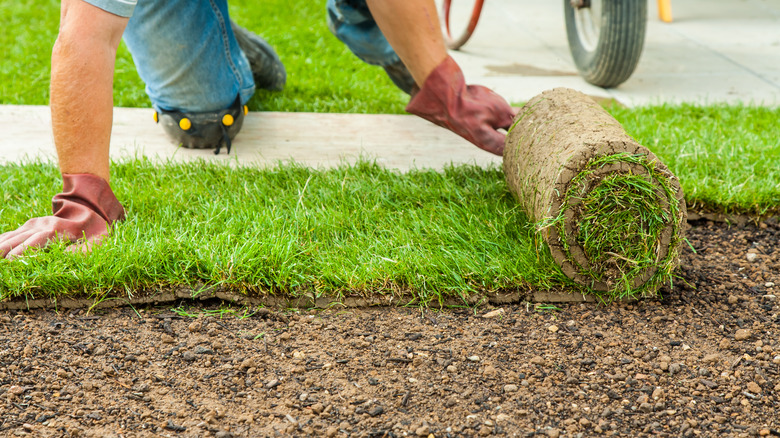Bees are a vital part of our ecosystem, but if you are one of the nearly 2 million people in the U.S. who are allergic to their stings, you may want to encourage them to go elsewhere for nectar. Flowers in the lawn are of particular concern for anyone who likes to spend time outside. It’s easy to aggravate a bee without even seeing it near your feet before suddenly getting that quick burst of pain. If you are among the population allergic to beestings, you may want to avoid transitioning your lawn to clover.
Clover lawns are a wonderful source of nectar for bees. These hardy plants in the legume family are nitrogen-fixing, which means they take nitrogen from the air and make it available in the soil. As a lawn alternative, clover is self-fertilizing while remaining tolerant of moderate foot traffic. If you are trying to reduce the possibility of beestings, there are a few options to keep you and your family safe.
Alternatives to a clover lawn

For those who have severe reactions to beestings, the best thing you can do is eliminate sources of nectar from your lawn. This includes clover, as well as weeds like dandelion, chickweed, and deadnettles. These tiny blooms attract native bees and honeybees, and while it’s nice to feed the bees if you can, the first priority is staying safe.
Keeping your lawn clear of blooming weeds may mean replacing your native yard with turf grass. Having sod installed is expensive, but it offers a quick fix. Tilling your yard, raking away the weeds, and spreading grass seed is a labor-intensive but less expensive option.
However you replace your blooming weeds, you will need to treat your yard with a pre-emergent herbicide to keep those weeds from coming back once your new lawn is established. Pre-emergents prevent weed seeds from germinating, but established weeds must be removed manually. If possible, simply pull them by hand. You can also use spray herbicides on those weeds, but to avoid harming beneficial insects, do not spray while they are blooming. Just think of pulling those weeds as an alternative to a day at the gym.
Eliminating clover blooms in an existing lawn
If replacing your lawn is not feasible or desirable, frequent mowing will help prevent most blooms. Start mowing in early spring as soon as chickweed, deadnettle, and other cool-season blooms start to appear. Clover starts turning green in early spring, but it takes a little while to start blooming. By keeping your lawn no higher than about 4 inches tall, clover will not have a chance to bloom, and most other weeds will be kept at bay.
In a natural lawn, it may not be possible to eliminate blooms entirely. Bees will also travel from one area to another through your space even if your yard has nothing to attract them. It is vital for anyone with severe allergic reactions to beestings to stay vigilant. Medical News Today states those who experience severe reactions should always be prepared with an EpiPen and seek immediate medical care. Even people who experience mild or moderate reactions need to watch the affected area to make sure it doesn’t get worse. If you have any concerns, see your doctor as soon as possible.